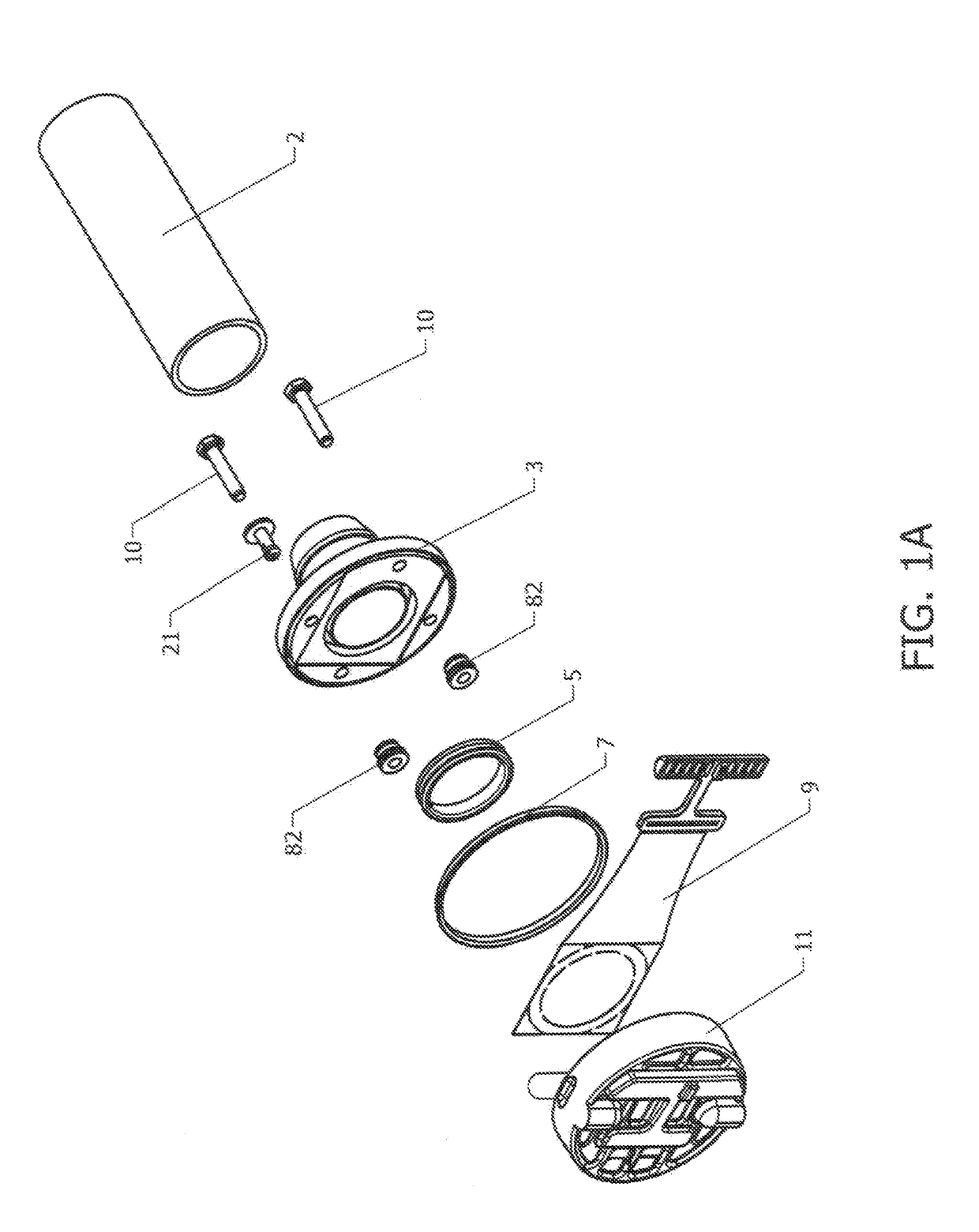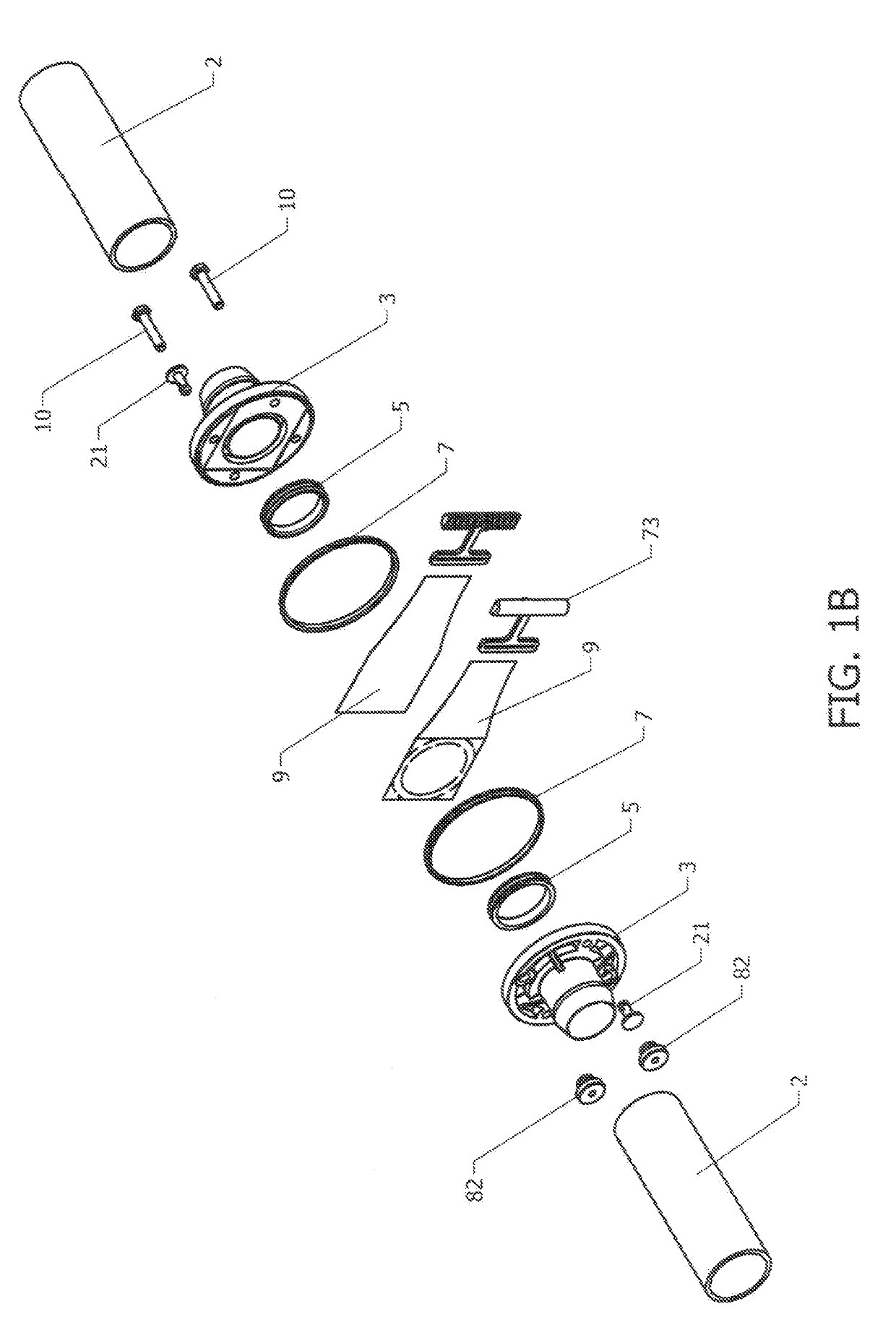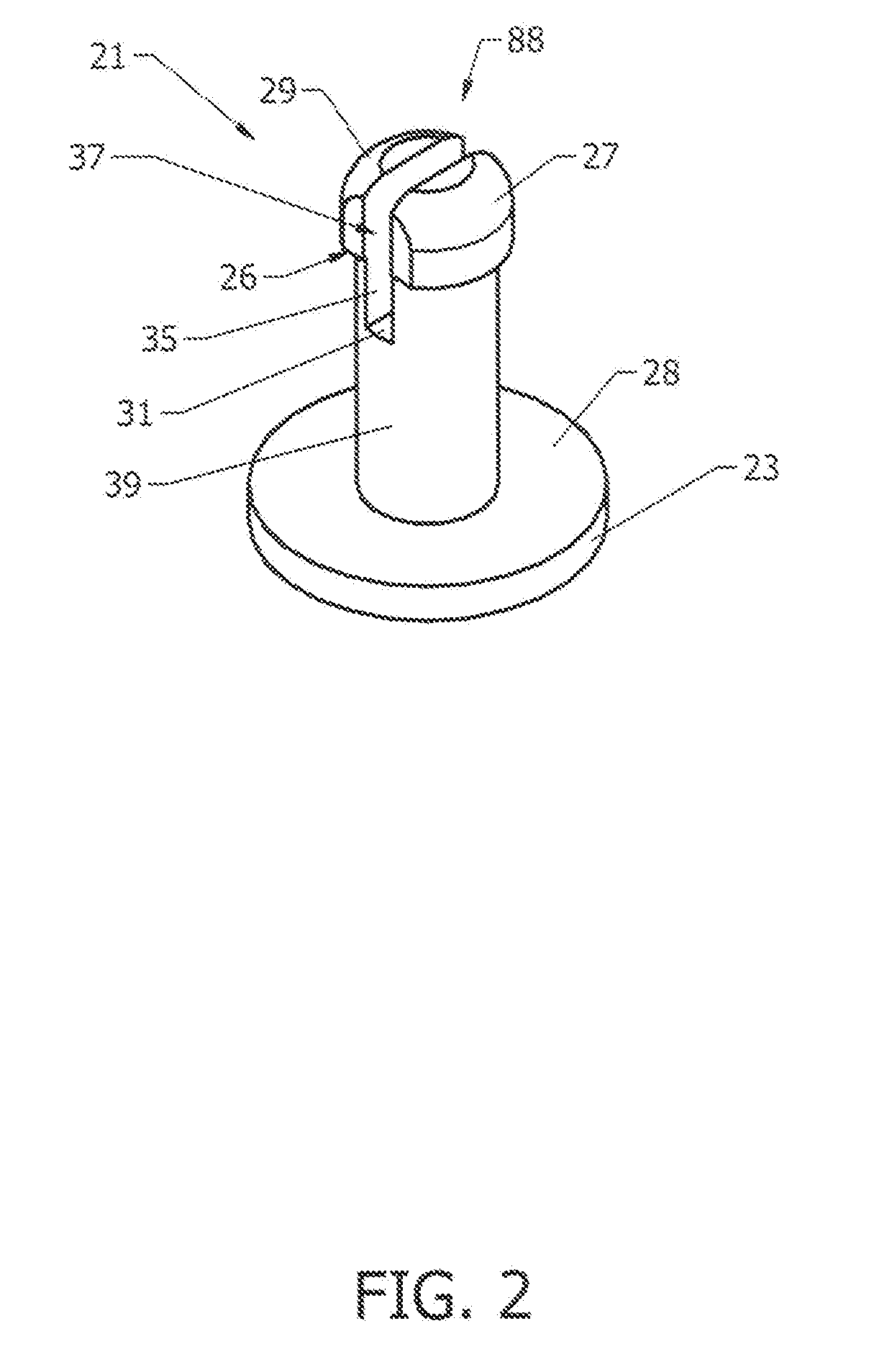Device for Aseptically Connecting Large Bore Tubing
a technology of aseptic shielding and connectors, which is applied in the direction of flanged joints, pipe joints, couplings, etc., can solve the problems of frequent undesired or not permitted, high cost of antibiotics, and inability to use such methods, so as to improve the performance of flanged tubing connectors, improve the resistance to joint rupture or deformation, and improve the effect of performan
- Summary
- Abstract
- Description
- Claims
- Application Information
AI Technical Summary
Benefits of technology
Problems solved by technology
Method used
Image
Examples
Embodiment Construction
Terminology and Structure
[0052]The terminology is best understood initially by referring to the structures illustrated in the drawings. (Not all structures that contribute to the invention are discussed in this section.)
[0053]Three major structures of the connector 3, shown in FIGS. 3C and 3D, are a connector tube 46 that forms the flow conduit; a hose barb 4 at one end of the tube 46; and a flange 14 at the other end of that tube. Also shown in the figures is a hose barb tube connector, although other tube connectors may be used, e.g., the sanitary “I” line type connector. The features of the flange 14 are described in greater detail below: The “proximal” end (defined by the connector tube proximal rim 40) of the connector tube is the end of the connector tube that is closest to the flange and indeed often encircled by the flange. The other end of the connector tube is the “distal” end 85. The proximal and distal ends of the connector tube are references for the use of the terms pr...
PUM
 Login to View More
Login to View More Abstract
Description
Claims
Application Information
 Login to View More
Login to View More - R&D
- Intellectual Property
- Life Sciences
- Materials
- Tech Scout
- Unparalleled Data Quality
- Higher Quality Content
- 60% Fewer Hallucinations
Browse by: Latest US Patents, China's latest patents, Technical Efficacy Thesaurus, Application Domain, Technology Topic, Popular Technical Reports.
© 2025 PatSnap. All rights reserved.Legal|Privacy policy|Modern Slavery Act Transparency Statement|Sitemap|About US| Contact US: help@patsnap.com



